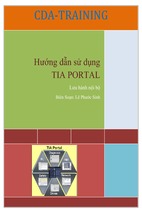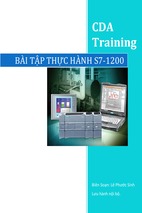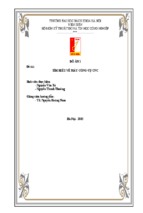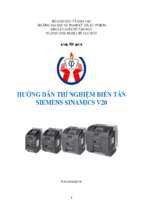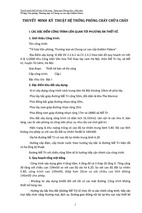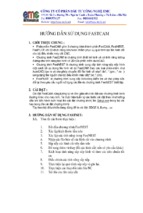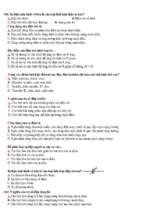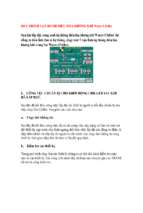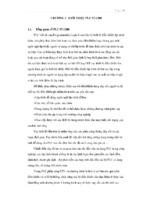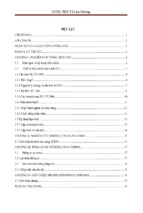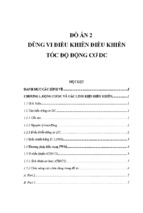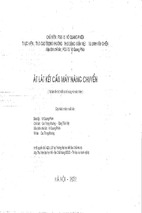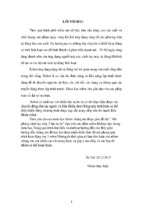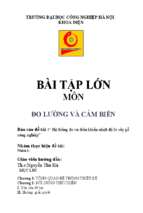Performance Rating
Work and Time Studies
Vietnamese German University
Dr.-Ing. Marlene Helfert
2016
Dr.-Ing. Marlene Helfert | Work and Time Studies | 2016 | 1
Performance rating
Contents
Performance rating
Standard performance
Influences on performance
Scales of rating
Westinghouse system
Synthetic rating
Speed rating
Objective rating
REFA performance rating
» REFA performance rating criteria
» Rating scales
» Evaluation of performance rates
Dr.-Ing. Marlene Helfert | Work and Time Studies | 2016 | 2
Performance rating
Motivation
Situation
Workers differ in their performance rates:
Worker A assembles 12 components per hour,
Worker B assembles only 10 components per hour under
the same conditions.
Problem
How can a performance standard be determined (standard
performance = 100 %), that can be used for production and
operation scheduling and also be met by all workers?
Solution
Observation of the activities including assessment of the
workers performance.
Schlick 2005
Dr.-Ing. Marlene Helfert | Work and Time Studies | 2016 | 3
Performance rating
Purpose
The purpose of performance rating is to determine, from
the time actually taken by the operator being observed, the
standard time that can be maintained by the average
qualified worker and that can be used as a realistic basis for
planning, control, and incentive plans.
Salvendy 2001
Dr.-Ing. Marlene Helfert | Work and Time Studies | 2016 | 4
Performance rating
Definition
Performance rating adjusts the mean observed time 𝑡𝑖 for
each element performed during the study to the basic time
𝑡𝑔 that would be required by a qualified operator to
perform the same work:
𝐿
𝑡𝑔 =
𝑡
100 𝑖
where the performance factor L is expressed as a
percentage.
If the analyst decides that the operation being observed is
being performed with less effective speed than the concept
of standard, the analyst will use a factor of less than 100
(e.g. 80 or 90). If the analyst decides that the effective rate
of working is above standard, it has a factor greater than
100 (e.g. 115 or 120).
Salvendy 2001
Dr.-Ing. Marlene Helfert | Work and Time Studies | 2016 | 5
Performance rating
Definition
The performance factor 𝐿 indicates the ratio of the actually
observed productivity to a standard productivity.
Example
Observed time 𝑡𝑖 = 12 min per unit
Rated performance 𝐿 = 120 %
Normal time 𝑡𝑔 =
120
∙ 12
100
= 14,4 min per unit
So in this case the worker is performing
very well. He or she is faster than average,
so the normal time of an average worker
would be higher than that of the observed
worker.
REFA 2013
Dr.-Ing. Marlene Helfert | Work and Time Studies | 2016 | 6
Standard performance
Standard performance is the rate of output that qualified
workers in a well-designed work environment will naturally
achieve
without undue fatigue or overexertion
during a typical working day or shift,
provided that they know and adhere to the specified
method and are motivated to apply themselves to their
work.
This performance is denoted as 100 on the standard rating and
performance scales.
Characteristics are e.g. a work execution that appears flowing,
harmonious, natural and balanced.
Standard performance features a performance range, not a
fixed point.
Salvendy 2001
REFA 2013
Dr.-Ing. Marlene Helfert | Work and Time Studies | 2016 | 7
Influences on performance
Effects on work execution
Work environment
Process design
Ergonomic design
Tools and resources
Task to be performed
Disposition of the worker
Mood
Fatigue
Circadian rhythm
REFA 2013
Dr.-Ing. Marlene Helfert | Work and Time Studies | 2016 | 8
Influences on performance
Factors that affect the work performance
Outside the worker’s control
Variations in the quality or other characteristics of the
material used, although they may be within the
prescribed tolerance limits
Changes in the operating efficiency of equipment within
the useful life
Minor and unavoidable changes in methods or
conditions of operations
Variations in the mental attention necessary for the
performance of certain elements
Changes in climatic and other surrounding conditions
such as light and temperature.
Salvendy 2001
Dr.-Ing. Marlene Helfert | Work and Time Studies | 2016 | 9
Influences on performance
Factors that affect the work performance
Within the worker’s control
Acceptable variations in the quality of the product
Variations due to his or her ability
Variations due to attitude of mind, especially the
operator’s attitude to the organization
To do a fair job of rating, the time study analyst must
evaluate the job in terms of the factors
that affect the rate of working.
Salvendy 2001
Dr.-Ing. Marlene Helfert | Work and Time Studies | 2016 | 10
Influences on performance
Requirements for measuring performance
The working system is designed optimally, the work
conditions (prescribed working method, environmental
conditions, tools) allow work execution in accordance with
standard performance.
The operator is suitable at the required level (physically and
mentally), trained (controlled, smooth workflow) and wellinstructed.
The work execution is not affected by environmental
influences or other circumstances.
The workflow can be influenced by the work execution. In
case of only limited influenceable workflows the result of
performance assessment depends largely on the experience
of the investigator.
The workflow is doubtlessly observable by the observer.
REFA 2013
Dr.-Ing. Marlene Helfert | Work and Time Studies | 2016 | 11
Scales of rating
There are several scales of rating in use, among the most
common are:
Westinghouse system
Synthetic rating
Speed rating
Objective rating
REFA performance rating
Salvendy 2001
REFA 2013
Dr.-Ing. Marlene Helfert | Work and Time Studies | 2016 | 12
Westinghouse system
Westinghouse system
One of the oldest rating systems, developed by Westinghouse
Electric Corporation
Wide application, especially on short-cycle, repetitive
operation where performance rating of the entire study takes
place
Applicable only for manually performed elements. All
machine-controlled elements are rated 100.
Four factors in evaluating performance
Skill
Effort
Environmental condition
Consistency
The overall performance factor rating is obtained by adding
the sum of the equivalent numerical values of the four factors.
Niebel 1992
Salvendy 2001
Dr.-Ing. Marlene Helfert | Work and Time Studies | 2016 | 13
Westinghouse system
Westinghouse system
Please find the performance factor for a worker, who
works with good skill (C1), excellent effort (B1), good
condition, and good consistency.
economicsdiscussion.net
Dr.-Ing. Marlene Helfert | Work and Time Studies | 2016 | 14
Westinghouse system
Westinghouse system
Please find the performance factor for a worker, who
works with good skill (C1), excellent effort (B1), good
condition, and good consistency.
Good Skill (Cl)
= + 0.06
Excellent Effort (Bl)
= + 0.10
Good Condition
= + 0.02
Good Consistency
= + 0.01
_____________________________
Sum
= + 0.19
L = 119 %
The algebraic sum indicates that the worker is 19
percent above average. If the worker gets negative
algebraic sum, he is considered to be below average.
economicsdiscussion.net
Dr.-Ing. Marlene Helfert | Work and Time Studies | 2016 | 15
Westinghouse system
Westinghouse performance-rating plan
Developed in 1949 by Westinghouse Electric Corporation
In addition to using the operator-related physical attributes,
the relationship between physical attributes and the basic
divisions of work is evaluated
The characteristics and attributes considered are
Dexterity
Effectiveness
Physical application
These three major classifications are assigned nine attributes
that carry numerical weights.
Appropriate for either cycle rating or overall study rating
Both of the Westinghouse rating techniques demand
considerable training to differentiate the levels of each
attribute.
Salvendy 2001
Niebel and Freivalds 1999
Dr.-Ing. Marlene Helfert | Work and Time Studies | 2016 | 16
Westinghouse system
Westinghouse performance-rating plan
Niebel 1992
Dr.-Ing. Marlene Helfert | Work and Time Studies | 2016 | 17
Synthetic rating
Developed in 1946 by Morrow
Eliminates judgment of the time study observer, therefore
giving more consistent results
The procedure determines a performance factor for
representative effort elements of the work cycle by comparing
actual elemental observed times and fundamental motion
data gained from PTS.
L=
PTS value for the element
Average actual time value for the same element
This rating factor is then used for all other effort elements of
the method.
L = 60 = 1,03 = 103 %
58
A worker needs an average of 58 seconds for
a task. According to an MTM-analysis, this
task needs 60 seconds. Can you calculate the
performance factor?
Salvendy 2001
economicsdiscussion.net
Dr.-Ing. Marlene Helfert | Work and Time Studies | 2016 | 18
Speed rating
In speed rating, the speed of the movements of a worker is
the only factor to be considered.
One of the most widely used rating systems
The time study engineer observes the speed of the
movements of the worker against a standard expected pace
and notes the relationship between them as the rating factor.
L=
Workers speed
Speed expected from the worker
The analyst must be familiar with the work being studied and
should undergo a comprehensive training program prior to
conducting independent studies.
L=
8 parts per hour
7,5 parts per hour
A worker produces 8 parts per hour, while
an average worker produces only 7,5 parts.
Can you calculate the performance factor?
= 1,07 =
107 %
Niebel 1992
Salvendy 2001
Dr.-Ing. Marlene Helfert | Work and Time Studies | 2016 | 19
Objective rating
Developed by Mundel and Danner (1994)
In objective rating, speed of movements and job difficulty are
rated separately and the two factors are combined into a
single value by multiplication.
Firstly the pace is rated by comparison with a standard pace
independent of job difficulty, then a second factor showing its
relative difficulty is assigned.
Factors influencing the difficulty adjustment are
Amount of body used
Foot pedals
Bimanualness
Eye–hand coordination
Handling or sensory requirements
Weight handled or resistance encountered
A numerical value for each of the six factors is assigned, and
the sum of these constitutes the difficulty factor.
Salvendy 2001
Dr.-Ing. Marlene Helfert | Work and Time Studies | 2016 | 20
- Xem thêm -

